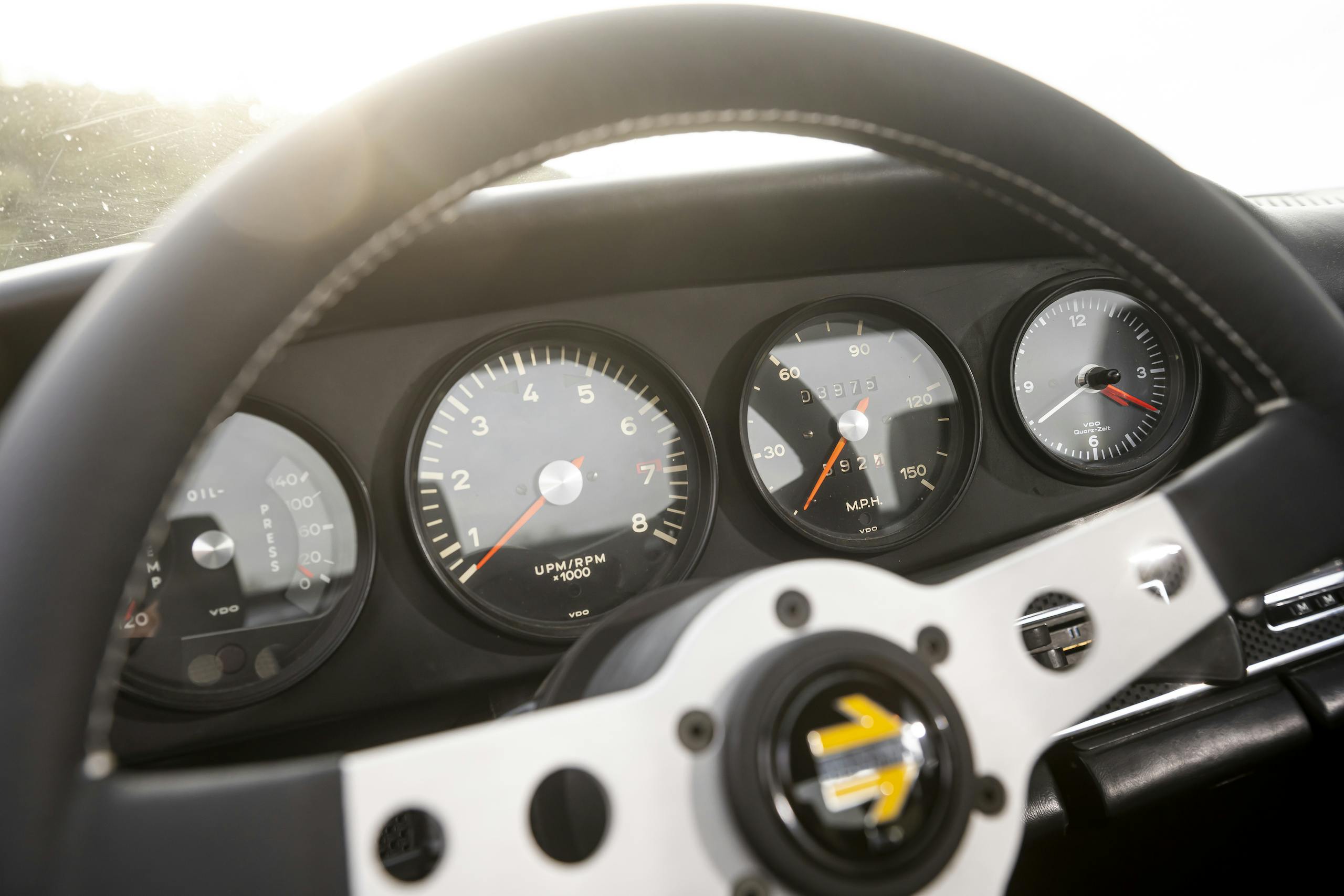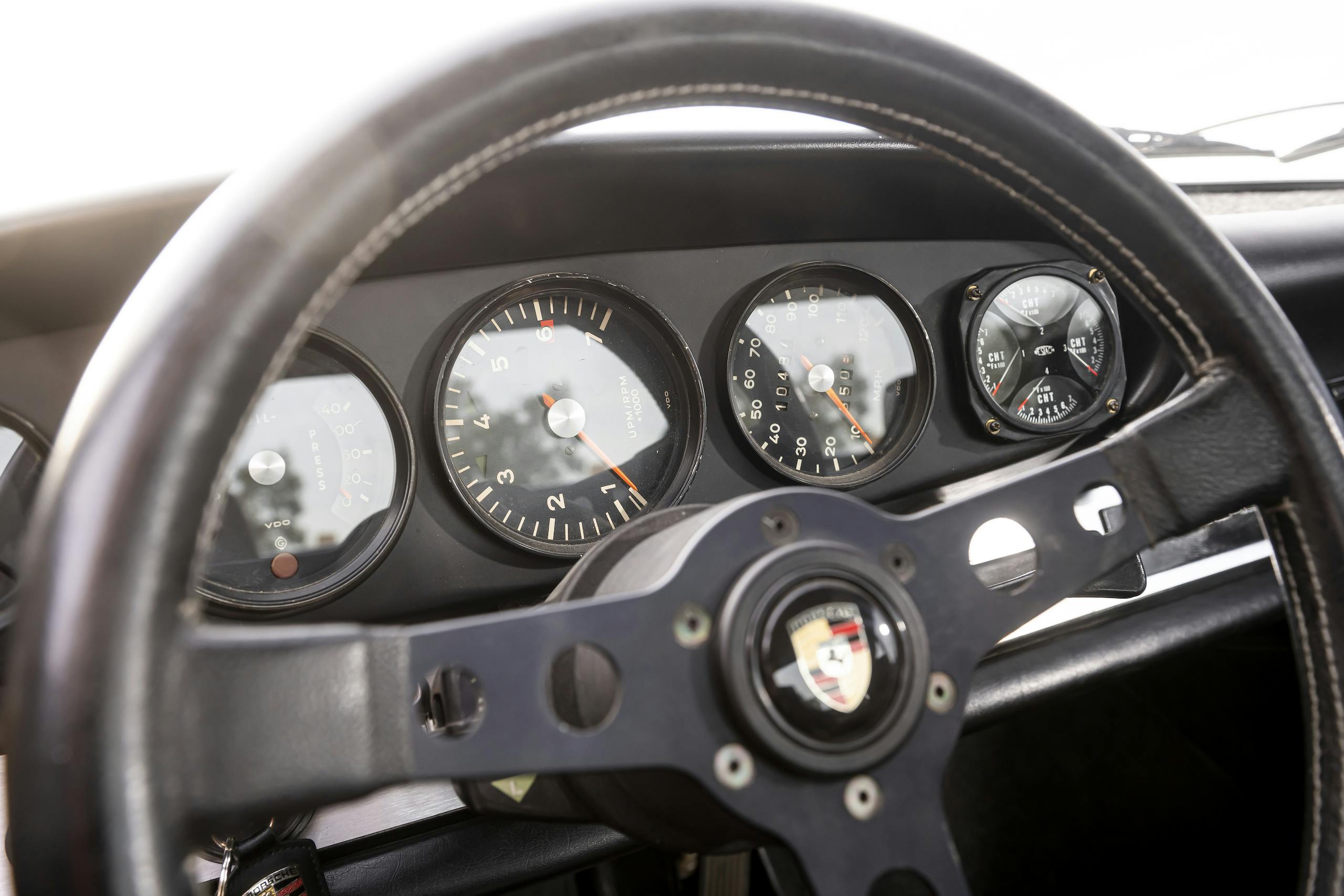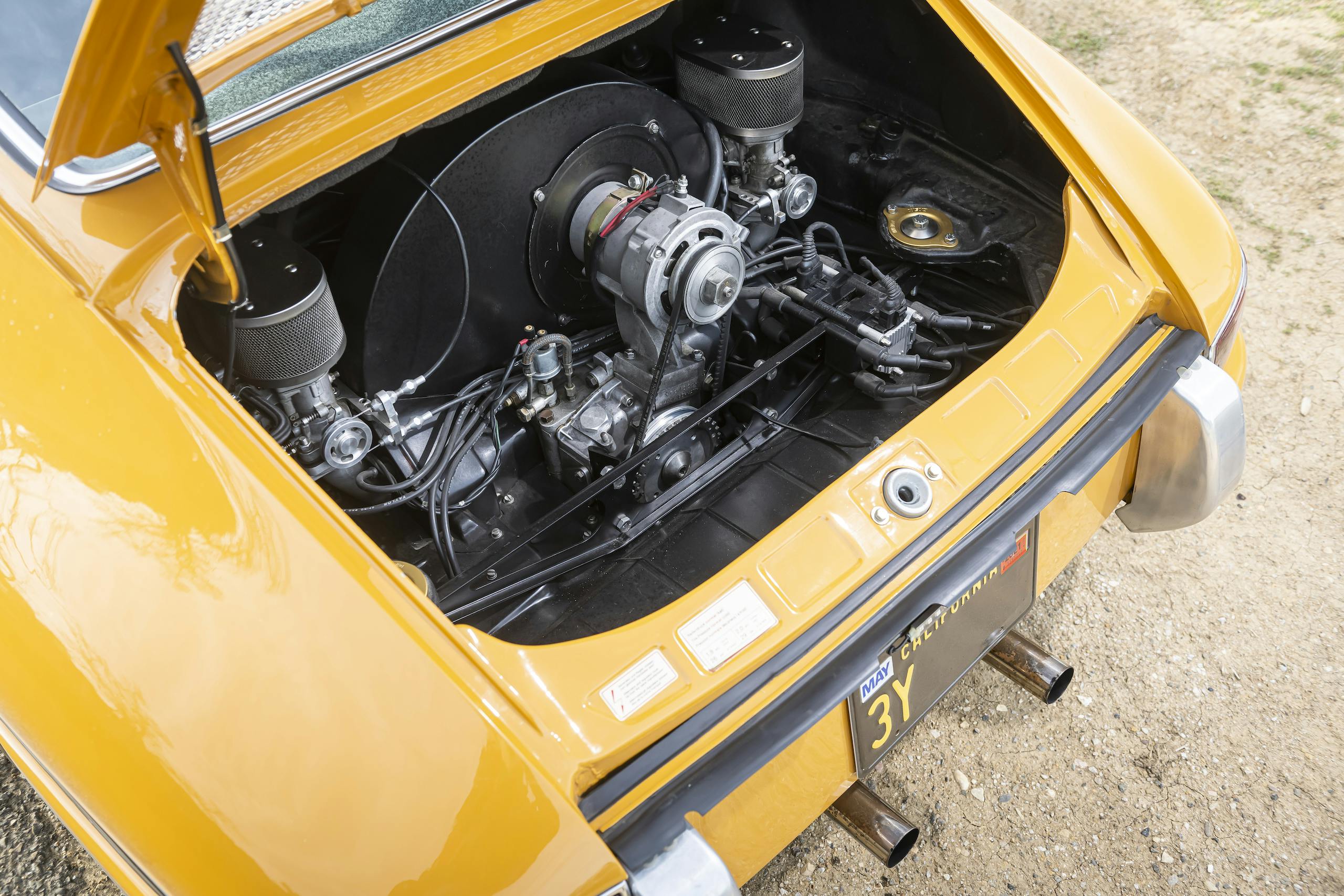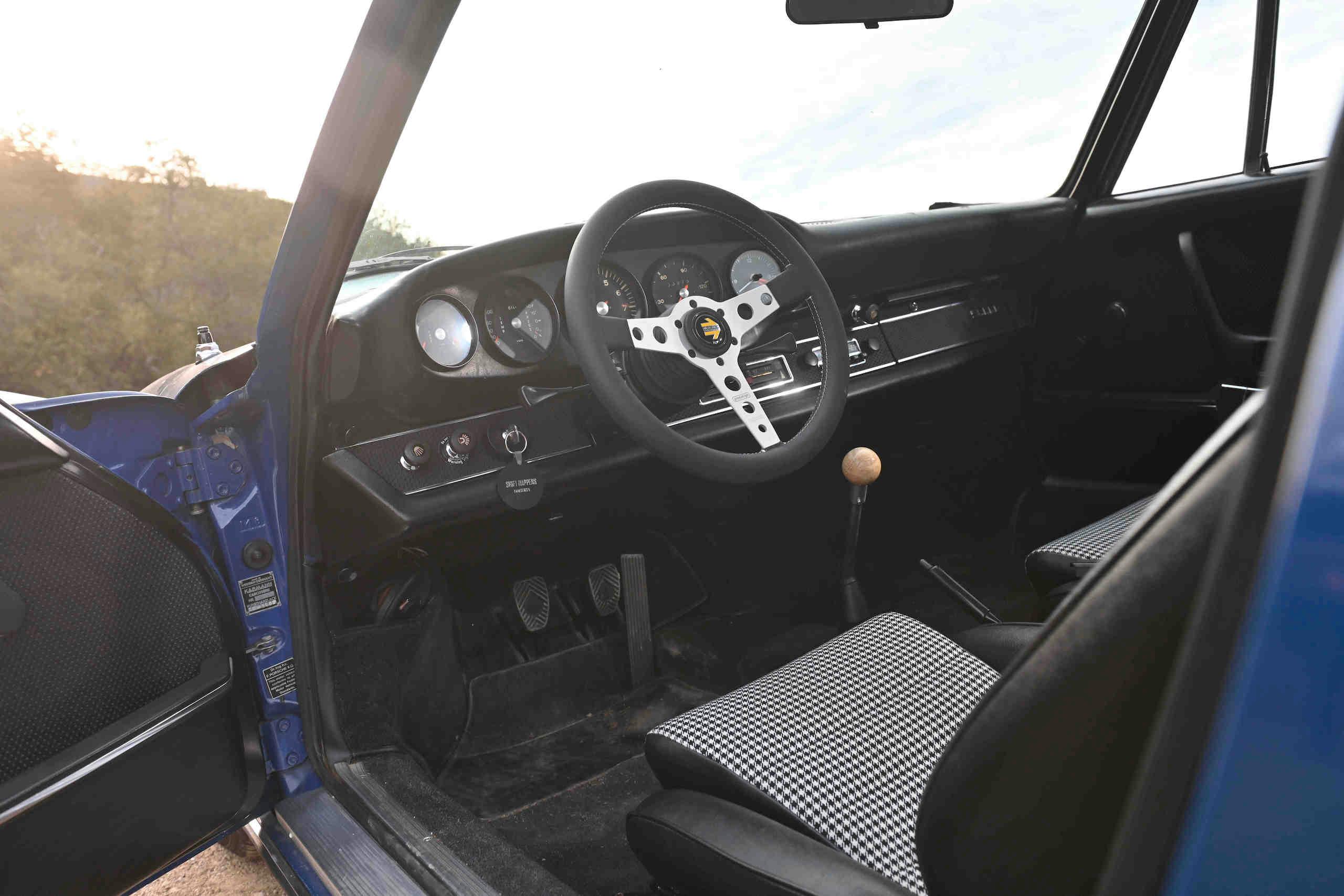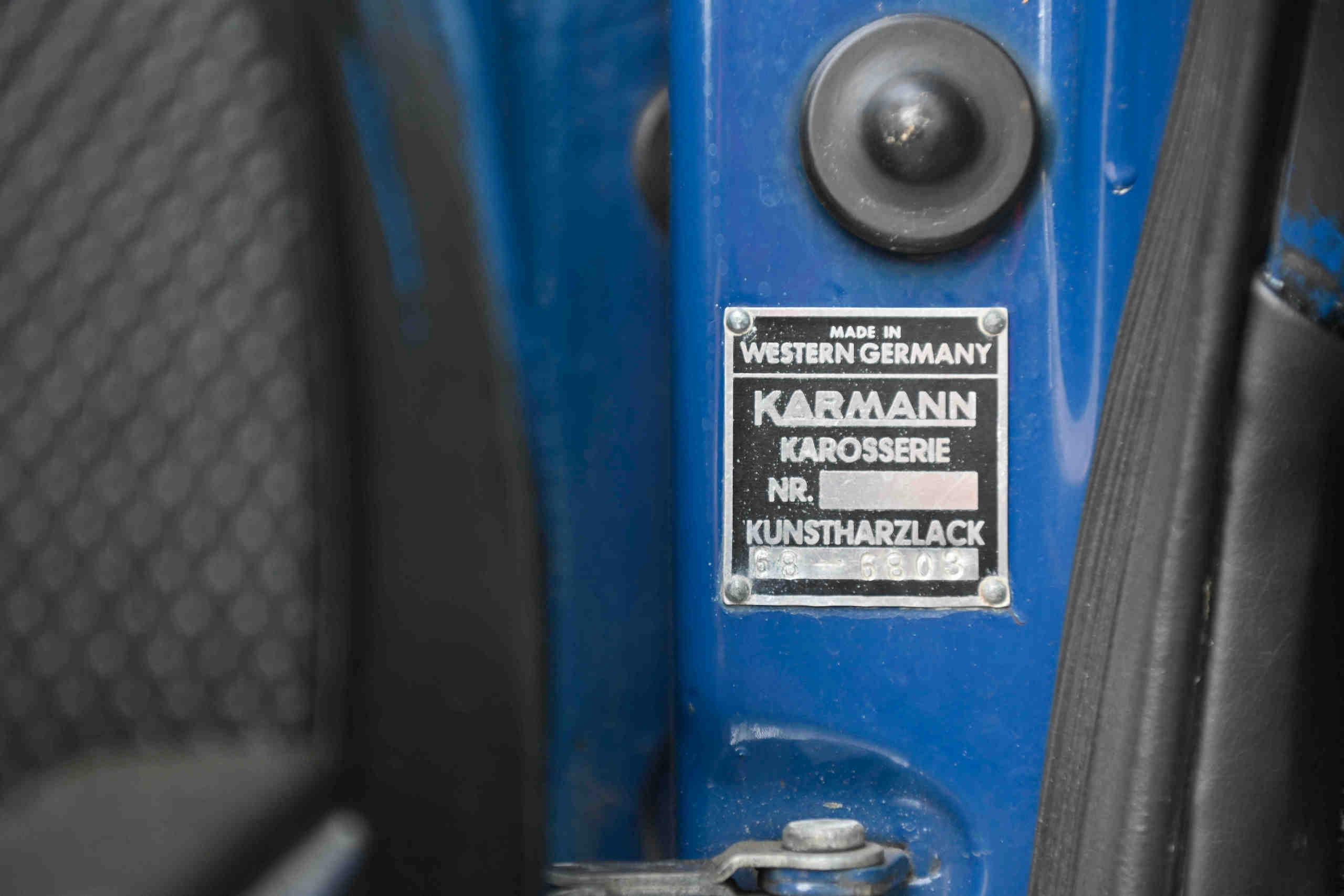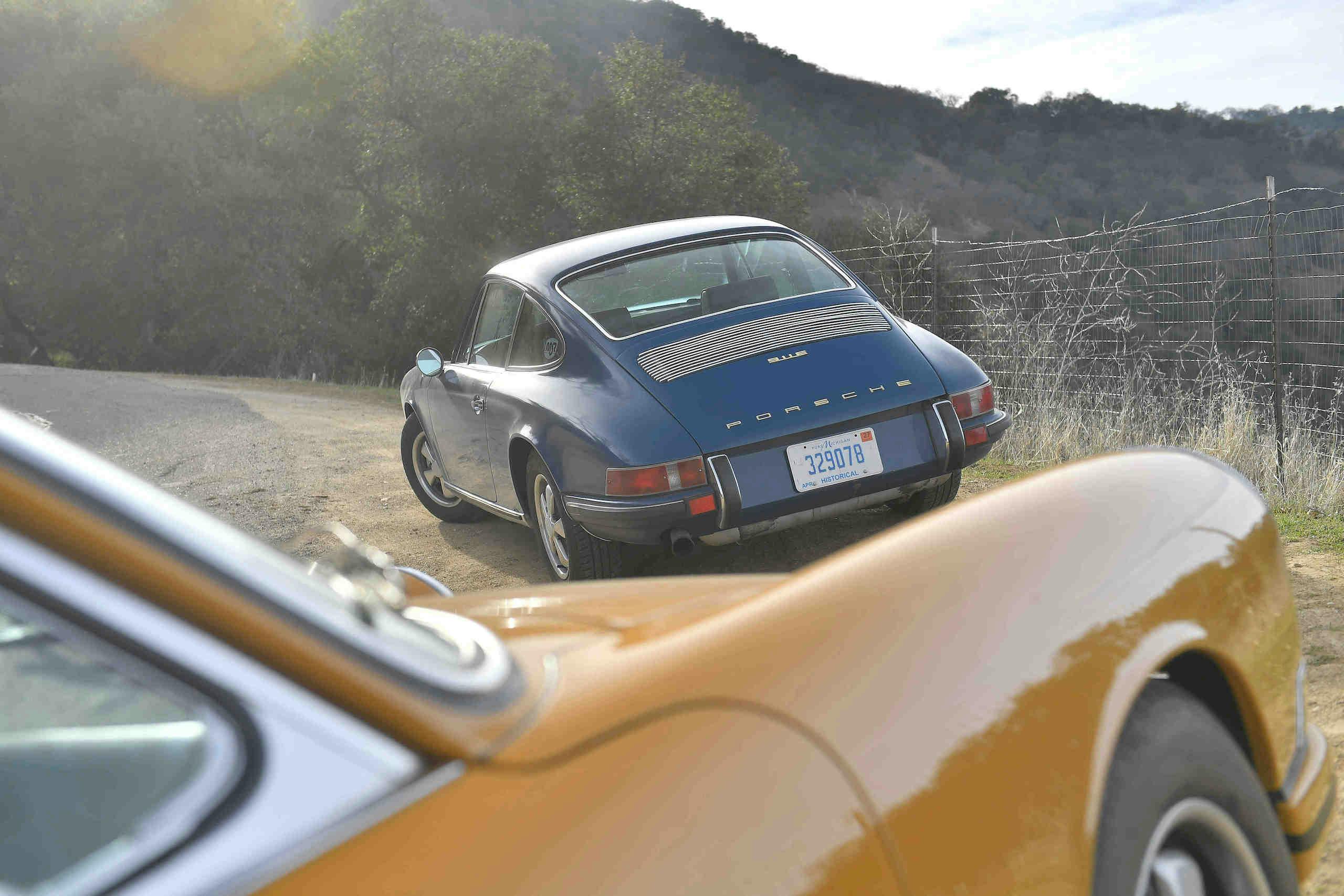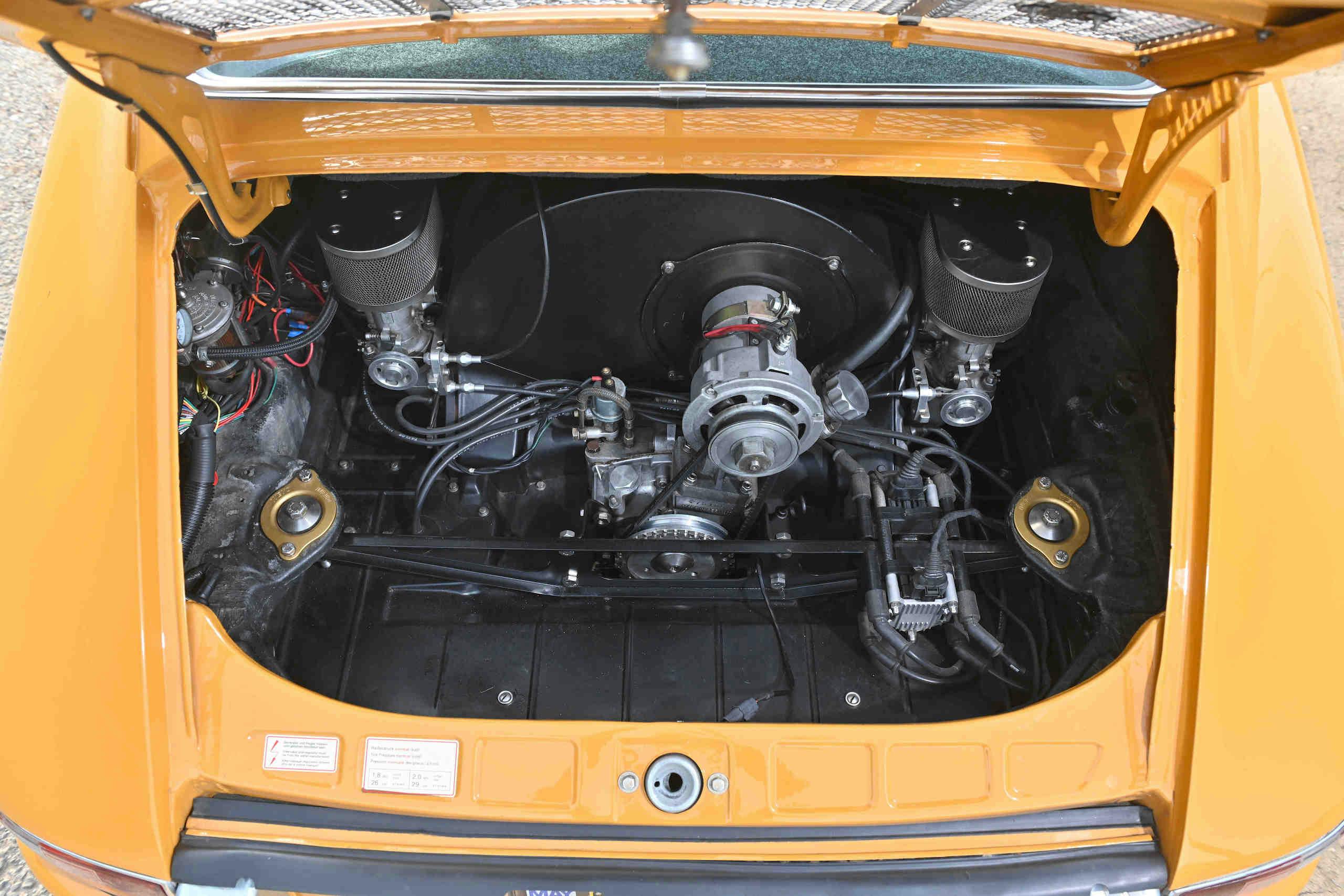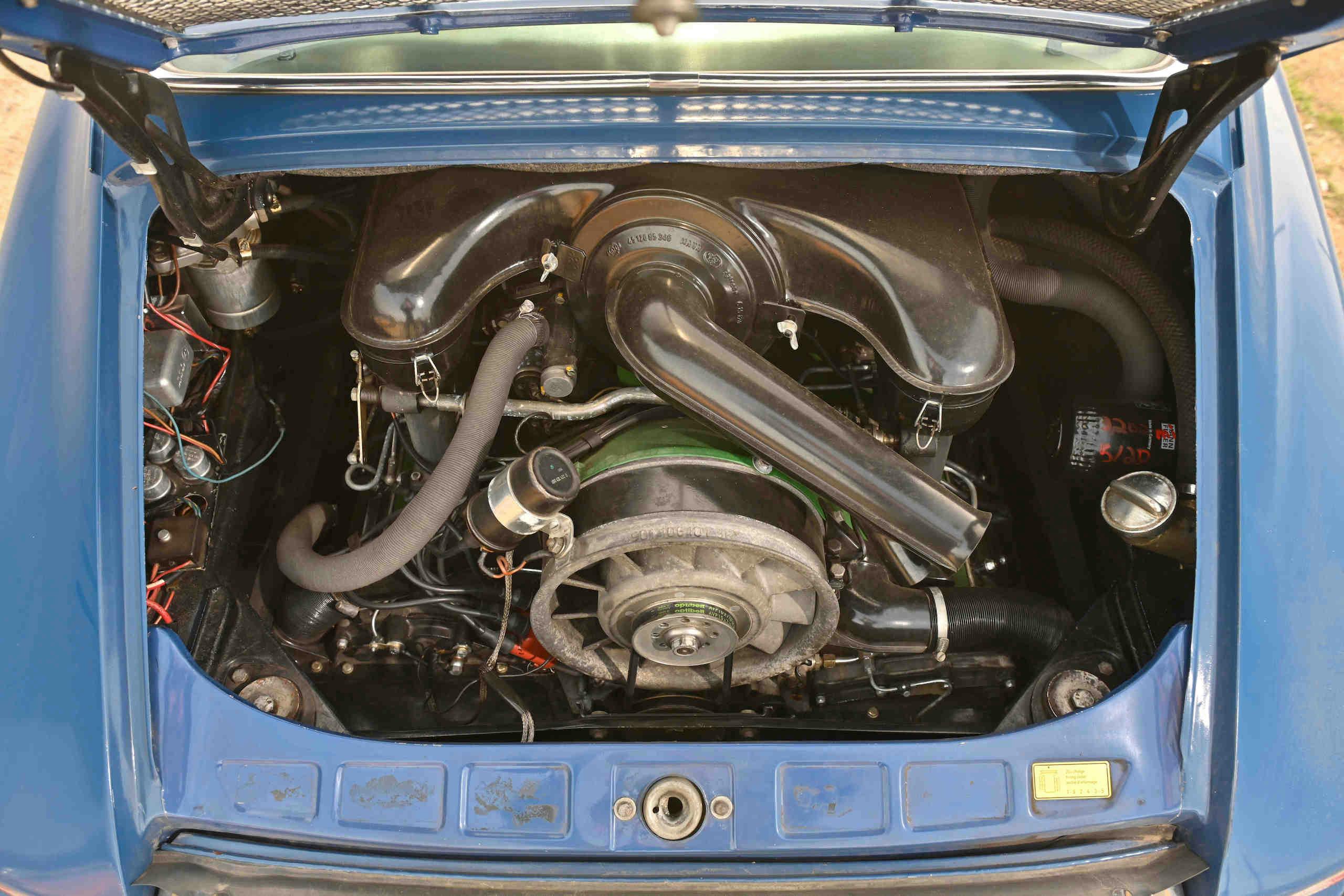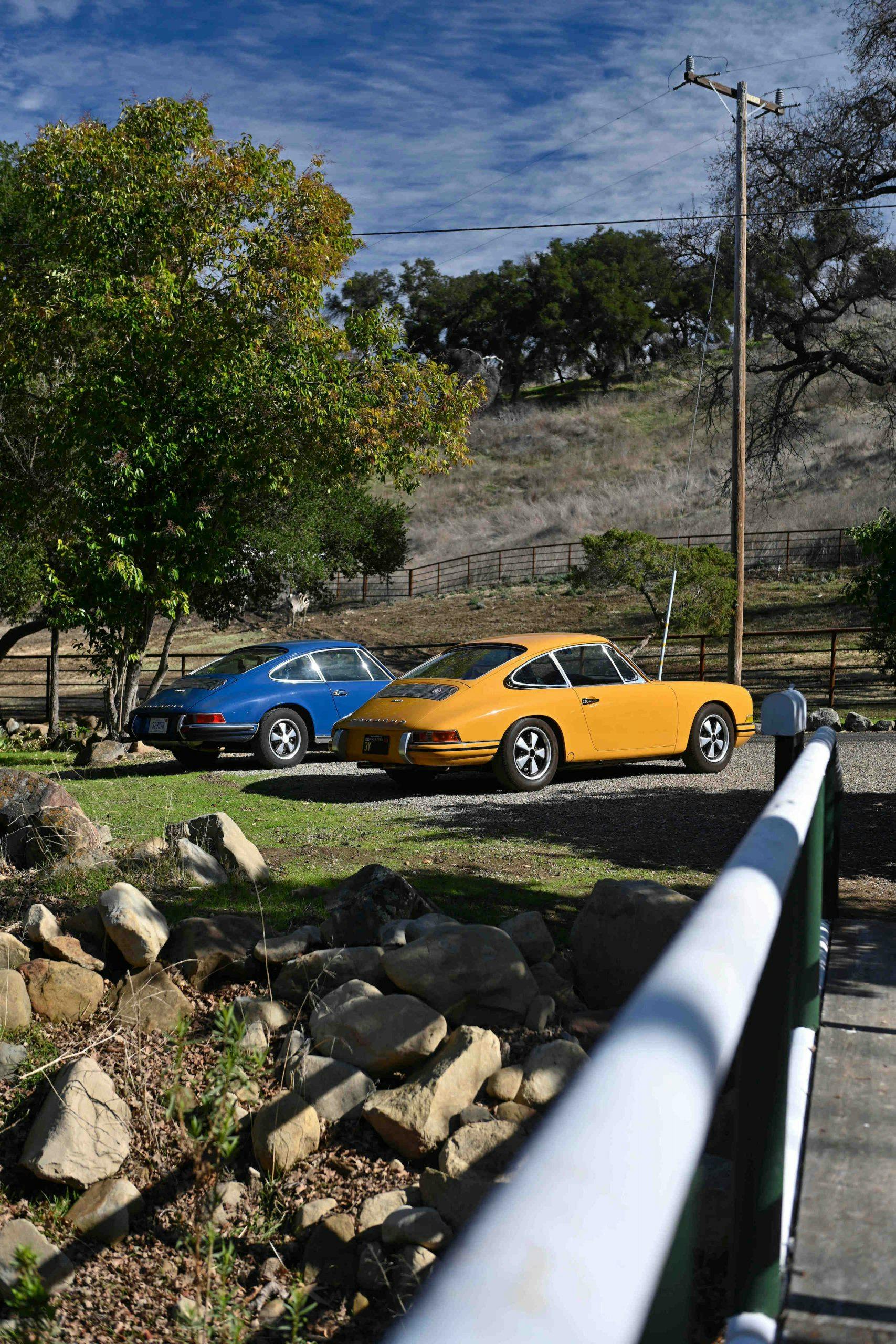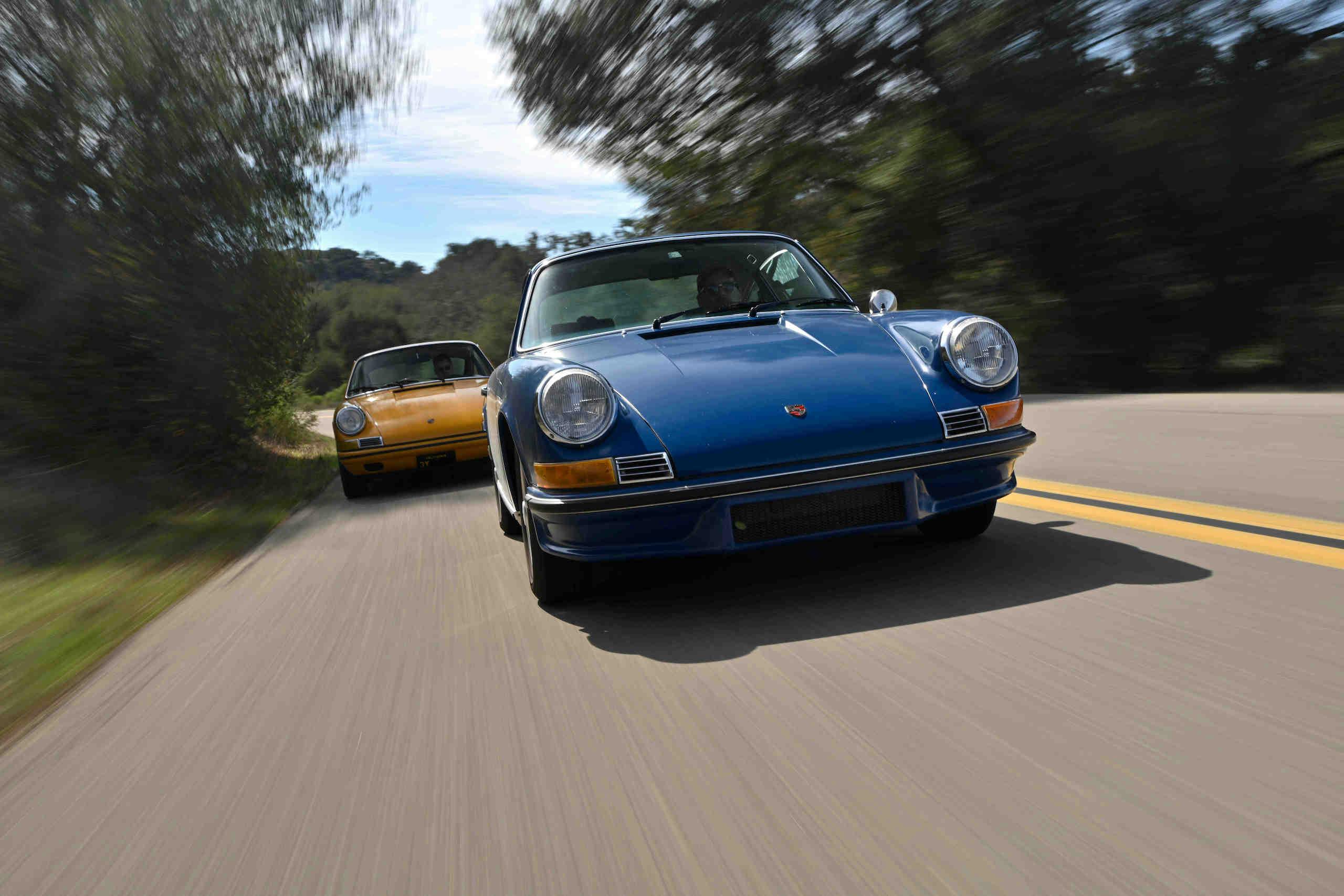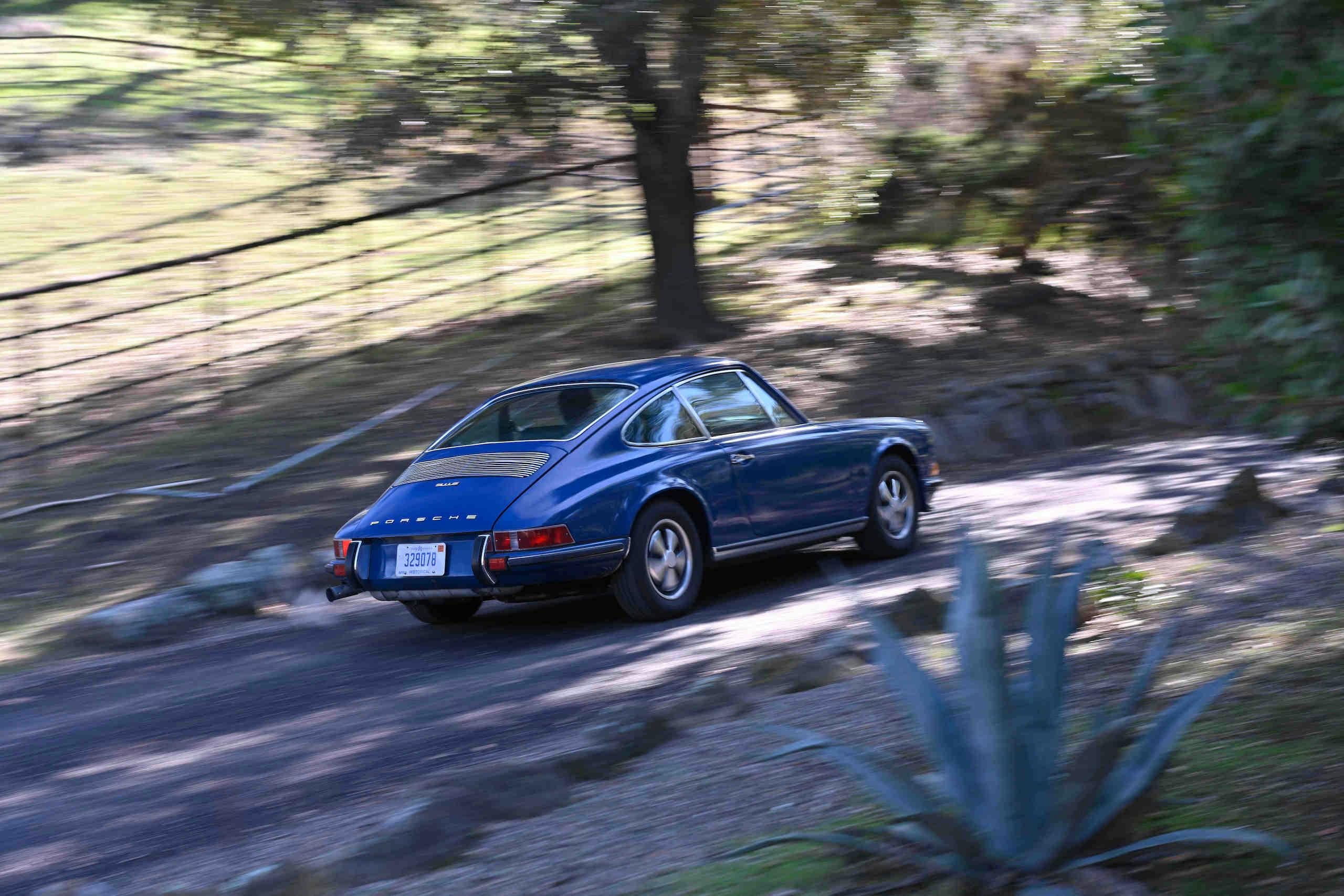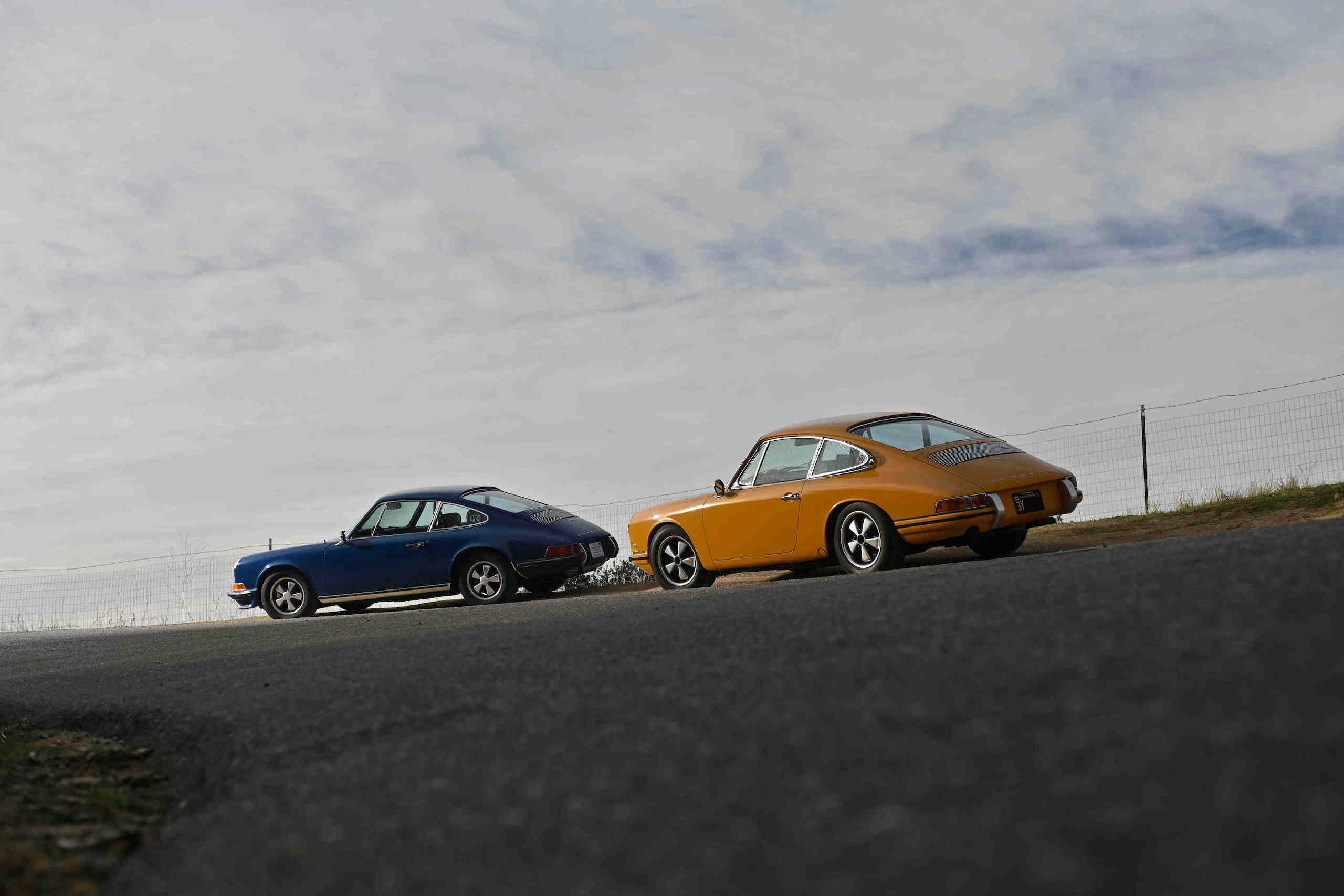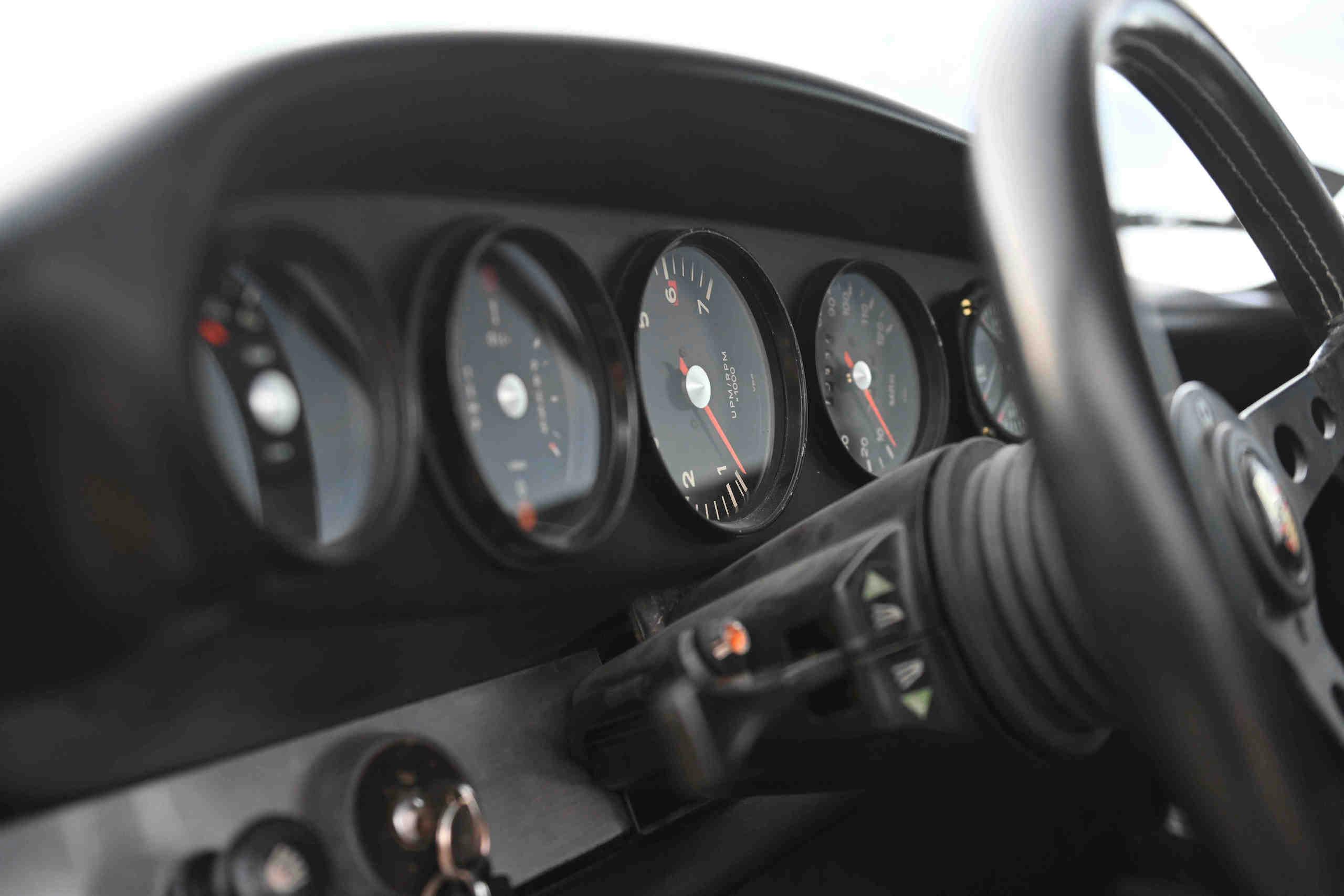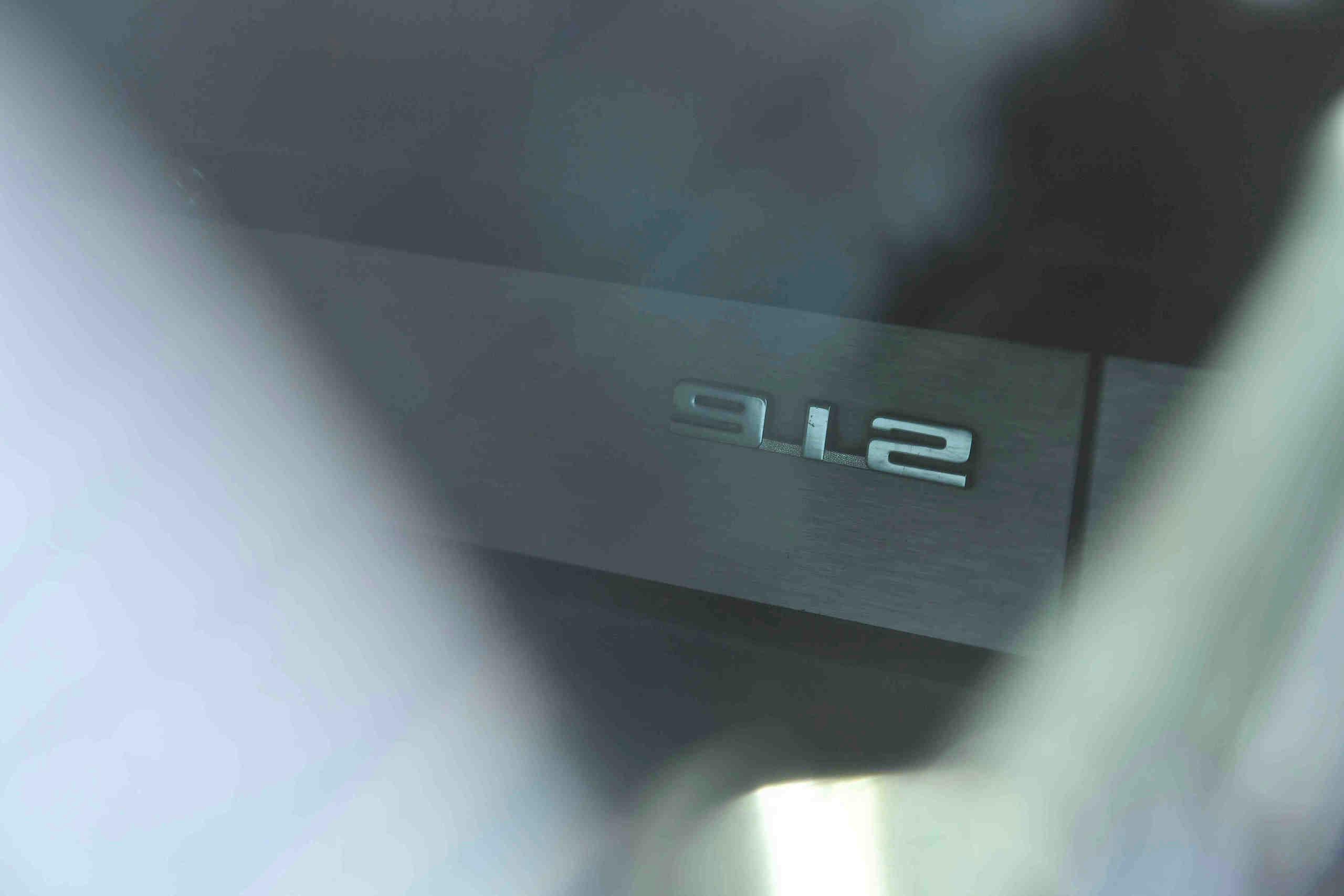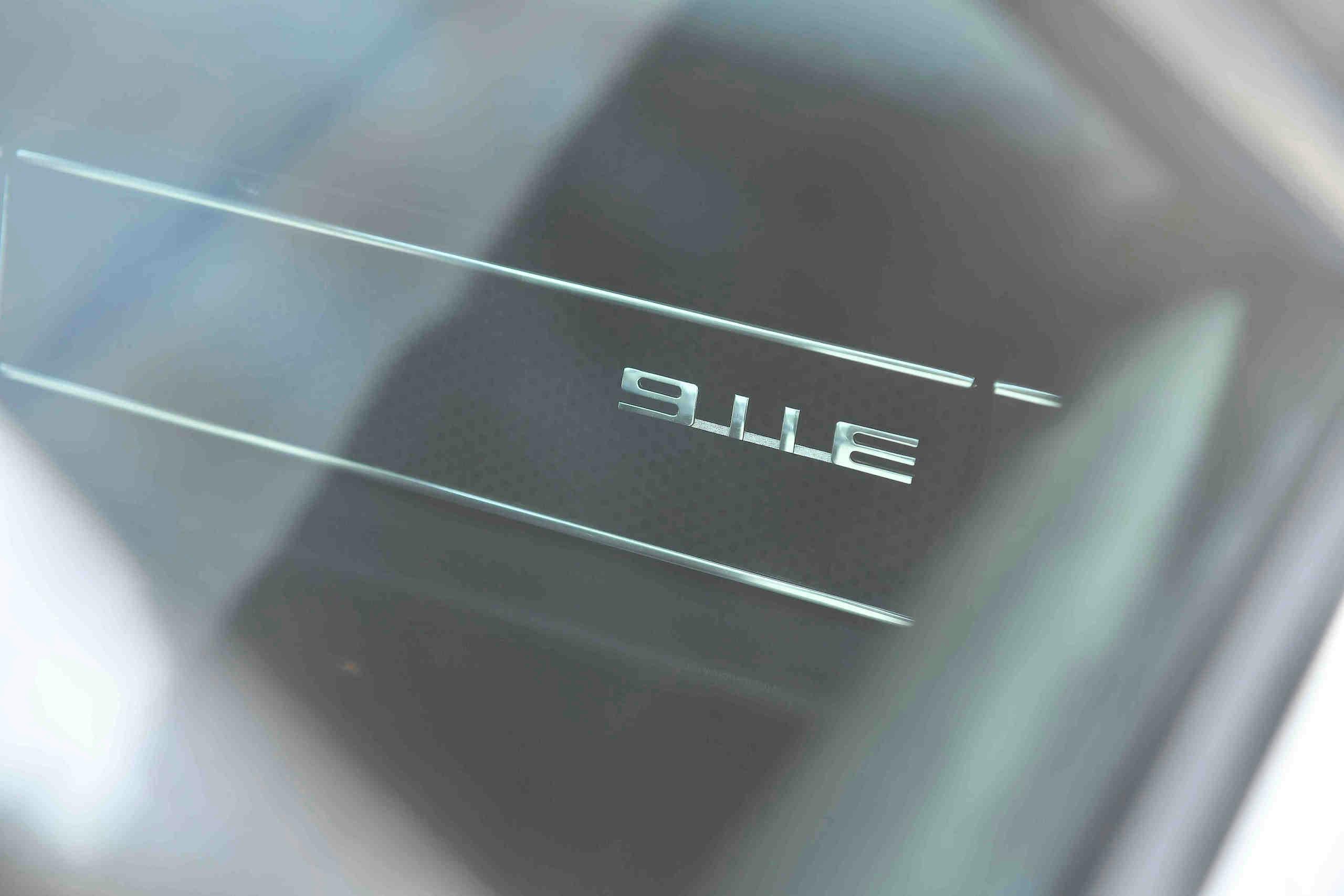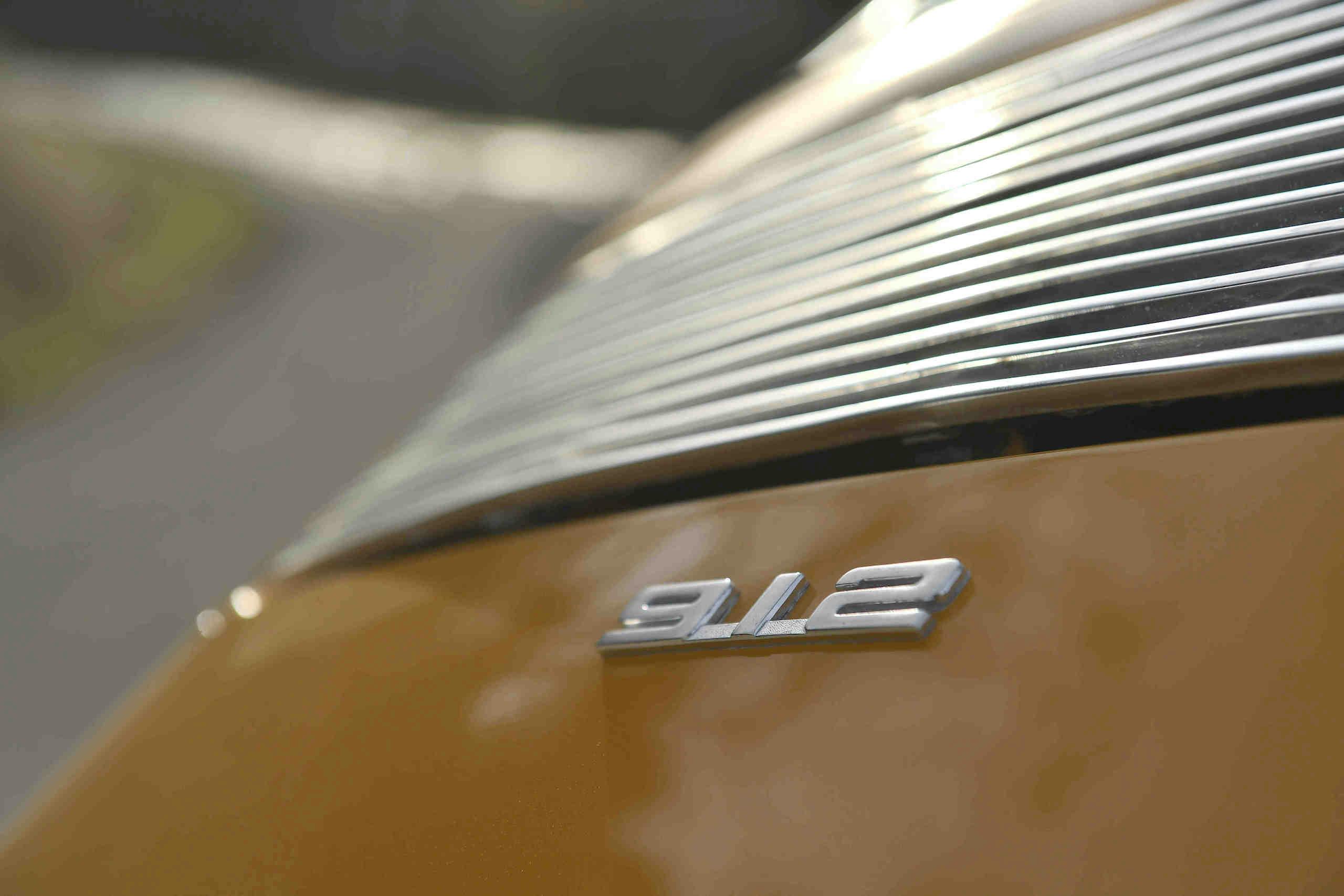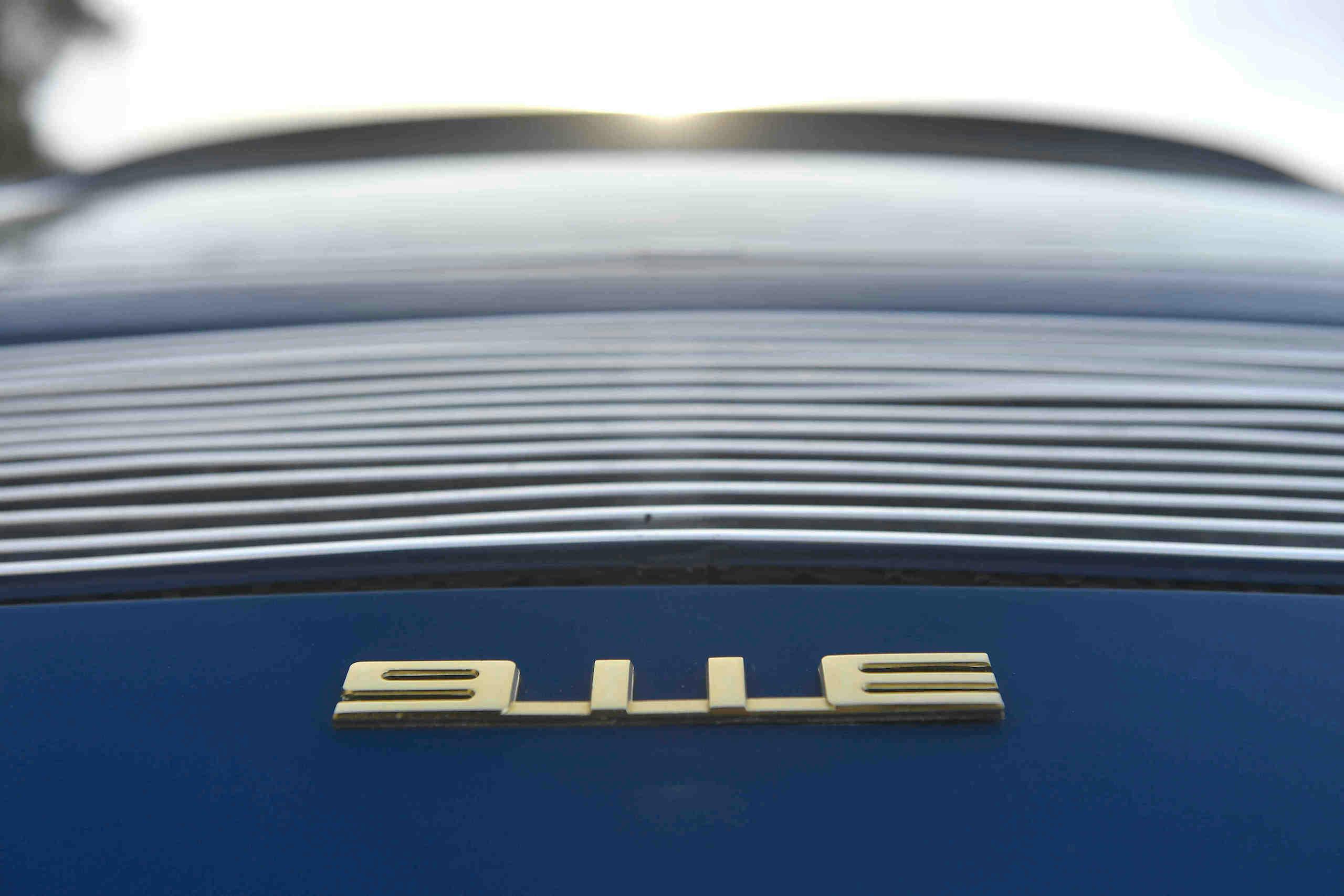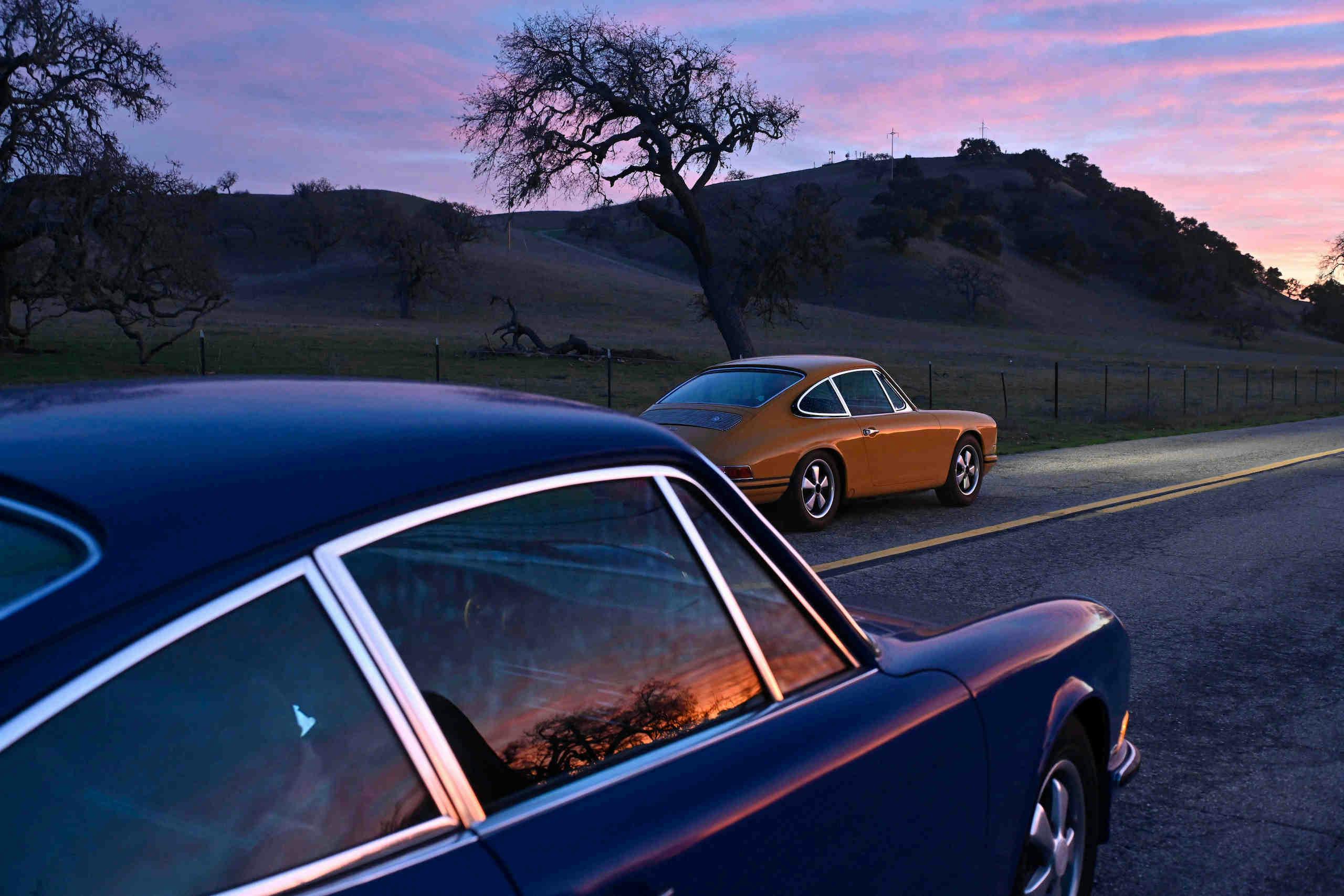Porsche 912: Poor man’s 911 or something more?
If you haven’t seen those beautiful posters of a Porsche 912 taking the checkered flag at Sebring or flinging snow through the night in the Rallye Monte-Carlo, it’s not your memory. They don’t exist. Despite racking up decades of success throwing 911s at almost every conceivable genre of four-wheeled motorsport, Porsche never directly campaigned the 912, Porsche’s four-cylinder and less prestigious derivative.
The 912 arrived in 1965 as a reaction to initially lackluster sales of the new $6500 six-cylinder 911. A cheaper car with a more basic trim, the 912 bore a $2000 price difference, which came by substituting in the 90-hp four-cylinder pushrod engine from the outgoing 356SC. Sales of the 911 eventually took off as its spectacular six-cylinder engine gained acclaim, and the model went on to become both a racing behemoth and one of the most recognizable and successful production sports cars in history. Conversely, sales of the 912 ended in 1970 after a production run of nearly 33,000 units. Despite a brief OPEC-induced Volkswagen-engine revival for one year in 1976, the model slipped away into relative obscurity for the next 40 years.
In the early 2000s, a surge of interest in early Porsches helped drag the 912 back into the classic car consciousness. It sports exactly the same lines as the iconic early 911 but with 200 fewer pounds and only 20 fewer horsepower than the carbureted base 911T of the same era. Accordingly, 912 values sit at around half those of six-cylinder variants. The 912 also appears to offer a more balanced weight distribution; its 1600-cc Type 616 engine is around 50 pounds lighter than the 2.0- and 2.2-liter six-cylinder engines of contemporary 911s. The 912 fan-people regularly claim that in situations where handling is more crucial than power, a 912 can outdrive a 911.
Well, can it?

It’s a beautiful winter morning in the valleys of the central California coast. The undulating roads that crisscross this region of verdant peaks, grassy vales, and beckoning vineyards are the natural environment for these cars. A gentle breeze of chilly, clear air, the tail end of a recent storm front, has left us with apogee driving conditions for air-cooled motoring and a comparison of my Bahama Yellow 912 and Hagerty Drivers Club editor-in-chief Larry Webster’s Ossi Blue 911.
Aside from cylinder count, other subtle differences separate these two cars. Webster’s early-1969 911 has a 2.25-inch-longer wheelbase than that of my ’68 912, a permanent stretch Porsche made in ’69 to increase both the 911’s and the 912’s handling stability. Also, this survivor rolls on its original 14-inch Fuchs, having sat undriven in a Michigan lockup from the 1970s until Webster purchased it in 2016. His car is a 140-hp E model with Einspritzung (fuel injection), which is the middle of three models offered for the year (the high-performance 160-hp S, for Sport, and base 110-hp carbureted T, for Touring, were above and below in the food chain).

Climbing down into Webster’s car set my olfactory memory into overdrive. A characteristic scent, amplified by the mild dampness of a car left parked overnight beneath a canopy of mossy oaks, percolated throughout the cabin. It’s the wholesome aroma of leaking oil, burning atop boxed headers that harvest warm air for the rudimentary heating system, which exists in varying amounts throughout every old 911—and yet is strangely absent from my 912. I sit for a moment and remember a drive to Le Mans Classic in my first Porsche, a 1972 911T, back in 2006, the ascending howl of six cylinders broadcast across the vast, empty, sunset-draped countryside of northern France.
It was apparent within moments of setting off that Webster’s stock 911E is quiet by comparison to the 912, which has an aftermarket electronic fuel-injection system that broadcasts a shrill metallic induction noise into the cabin, accompanied by the distant staccato snare of dancing pushrods from deep inside the engine. It’s a touch loud, although not unpleasant, and perhaps gives an impression of progress that belies the car’s lesser performance.
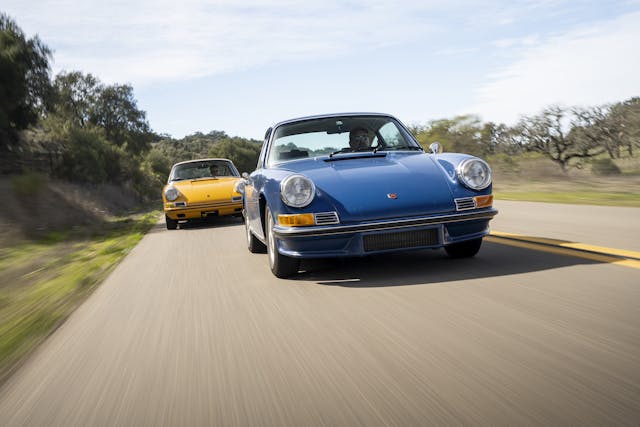
The 911E, by comparison, uses a factory plastic intake plenum to attenuate induction noise to a very pleasing level. Fuel delivery is via throttle bodies and a mechanically driven pump. Invented in 1925 and refined in German fighter aircraft during World War II, mechanical fuel injection was first utilized by Porsche on the 906 and 911R race cars of the mid-1960s, making its road car debut in 1969 E- and S-model 911s. The pump itself is archaic, complex, and finicky to adjust, but it rewards exacting setup with a crisp, torquey, instant power delivery, backed by a hair-tingling, rhythmic engine note that reverberates through this empty canyon landscape like a Sawzall ripping through sheetmetal. If the music of my 912 is a lone dude hammering out jazz sax in the corner of a Kreuzberg cafe, then the 911 is the entire Berlin Philharmonic, performing live at the Konzerthaus. With power tools.
The 912 came in one engine flavor only, a 90-hp mill, long descended from the lineage of the 1200-cc 36-hp VW Type 1. Steel wheels and a handful of rudimentary options positioned the 912 to prevent impacting 911 sales—although, given the traditional Porsche owner’s inclination toward modification, you’d be hard-pressed to find a car today that hasn’t been upgraded in some form or other. Both my car and Webster’s have aftermarket sports seats—I’ve yet to find a real-world human who is comfortable in the wide, flat originals—plus aftermarket Momo Prototipo steering wheels and upgraded brakes. Both sport the same dogleg 901 transmission (the fifth gear was a $35 option on my 912).
Webster’s gently used 911 has survived its 52 years as a largely original example, whereas my 912—like most—lived an existence of botched rust repairs, vandalism, and accident damage. I bought it in the Bay Area running on 1.5 cylinders, drove to LA using cable ties to hold the throttle linkage together, and shipped it home to England. There, the car’s non-numbers-matching motor was rebuilt, balanced, and ported, with bigger valves, more cooling, and an extra 300 cc of displacement. The shell, smashed front, rear, and sides during its tortured previous life, was straightened and restored on a jig before a full restoration and its return to the road in 2015. A few years later, after moving back to the U.S. and bringing the Porsche back with me, I added a crank-fired, twin-plug electronic ignition system followed by electronic fuel injection through a pair of Weber IDF–style throttle bodies.
To the untrained eye, the 912 appears stock, meaning unassuming, delicate, and pretty enough to stop you in your tracks. But it sports a list of weight-reduction modifications—a fiberglass front bumper, a stripped-out interior, an aluminum rear panel, and bumper overriders—to make it a touch quicker and, given Colin Chapman’s famous dictum about adding lightness, more agile on the road. Was my litany of incremental gains worthwhile? This was the perfect opportunity to test the hypothesis.
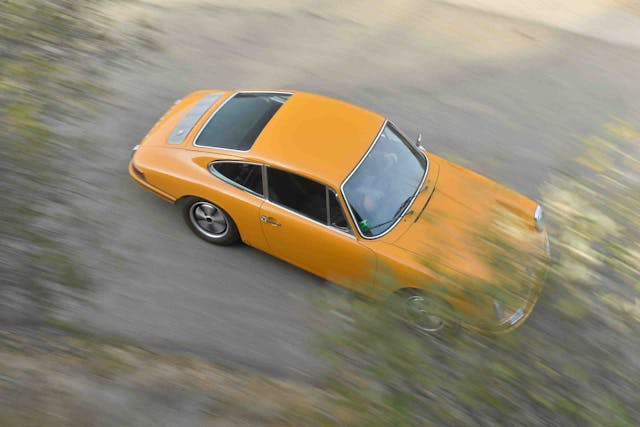
I’m back in the 912, ahead of Webster’s mellow orchestral ensemble, screaming blue murder down the sax, or perhaps some kind of trumpet. The recent rain has pushed patches of gravel onto the road, and both cars scrabble for grip on their 5-inch-wide tires. The most often discussed attribute of the 912, its more neutral weight distribution over the 911, is as clear as day, but the torquey 911 is noticeably quicker out of corners. At moments like this, one can begin to fixate on the reputation of the 911 as an ill-handling monster, which will, according to the unbearable motoring-writer cliché, throw you “off the road, backwards and through a hedge.”
It’s all lies. Firstly, there are no hedges in this part of California; they burned in the last wildfire. Secondly, the early 911s, especially the post-’69 long-wheelbase variants, are not ax-wielding psychopaths as many proclaim but merely misunderstood inbreds living with personality issues based around a chassis descended from a mass-produced 1930s people’s car. The introduction of the 911 and 912 eliminated the Beetle-derived transaxle swing-arm suspension gene that endured through the previous-era 356, replacing it with a trailing-arm system that handles the famously wonky, rear-biased weight distribution with unique, engaging competency. Wash away your fears and absorb the sensation, for it is driver feedback, through the seat of the pants and the steering wheel, that makes these Porsches the Porsches.
The imbalance is quite a big part of the fun, and within minutes, you find yourself channeling this attribute in the pursuit of speed. Brake early, aim the car straight into the corner, roll on the power, and feel the back of the car subtly rotate around a pivot point somewhere just ahead of the nose as you slingshot out of the bend. This subconscious process, akin to riding a motorcycle quickly, requires you to clear your mind of extraneous thought and concentrate wholeheartedly on the task at hand.
The 912 is similarly communicative, albeit softer sprung and distinctly daintier in steering. The cornering feel could not be more different. Grip pushes away from all four wheels simultaneously and, with an axis of rotation somewhere under your seat, feels less inclined than the 911 toward an undesirable handling event at sensible road speed. The suspension is technically the same as that of a 911 (my car’s entire front suspension was pilfered from a 1980s-era 911SC), yet with a playful floatiness that feels a touch closer in lineage to a 356.
It becomes apparent that comparing the two cars’ weight distribution is merely a distraction within a much bigger picture; would the 911 be quicker through a corner if there wasn’t 400 pounds of engine sitting out past the rear axle? Perhaps, although it didn’t seem to prevent racing drivers from roasting front- and mid-engine cars at numerous moments throughout motorsport history. Is the 912 quicker on a tight, twisty public road? No way. But that’s missing the point; the performance of these cars was eclipsed by modern metal eons ago. Is it any less fun? Well, using monetary value as the metric, a 912 is inarguably more than half as fun. When Stuttgart bean counters decreed that two cylinders be sliced from the 911’s engine compartment, clever engineers ensured that the end result was still very much a Porsche.
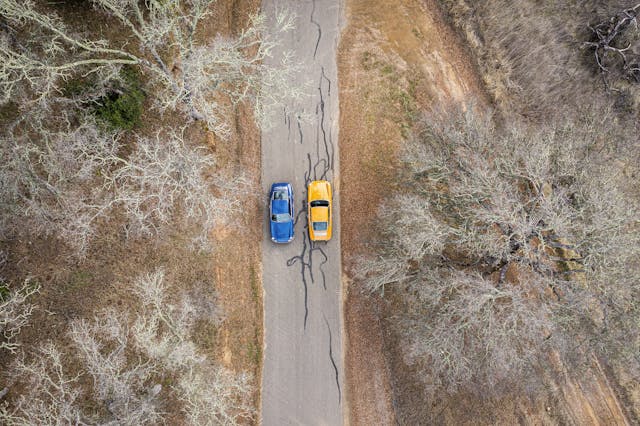
When the 912 launched in 1965, it initially outsold the 911 at a ratio of two-to-one. The pursuit of horsepower throughout the 1970s, ’80s, and ’90s pushed lesser-powered early 911 prices into the doldrums, and the more common, less exotic 912 became essentially worthless. A shift toward the experiential focus of classic car ownership in the early 2000s drew enthusiasts back toward these early cars for the same reason the original buyers in the 1960s were captivated by them: beautiful lines, meticulous engineering, and an unrivaled driving experience. Nowadays the decision to drive a 912 is not so much one of cost (the maintenance rivals that of the 911), but more a desire for something beyond the status quo. Although the 912 will forever exist in the shadows of the car that defined Porsche, the experience behind the wheel will make your soul sing. Even if the tempo is a little more allegretto than allegro.
***
This article first appeared in Hagerty Drivers Club magazine. Click here to subscribe and join the club.
Check out the Hagerty Media homepage so you don’t miss a single story, or better yet, bookmark it.

